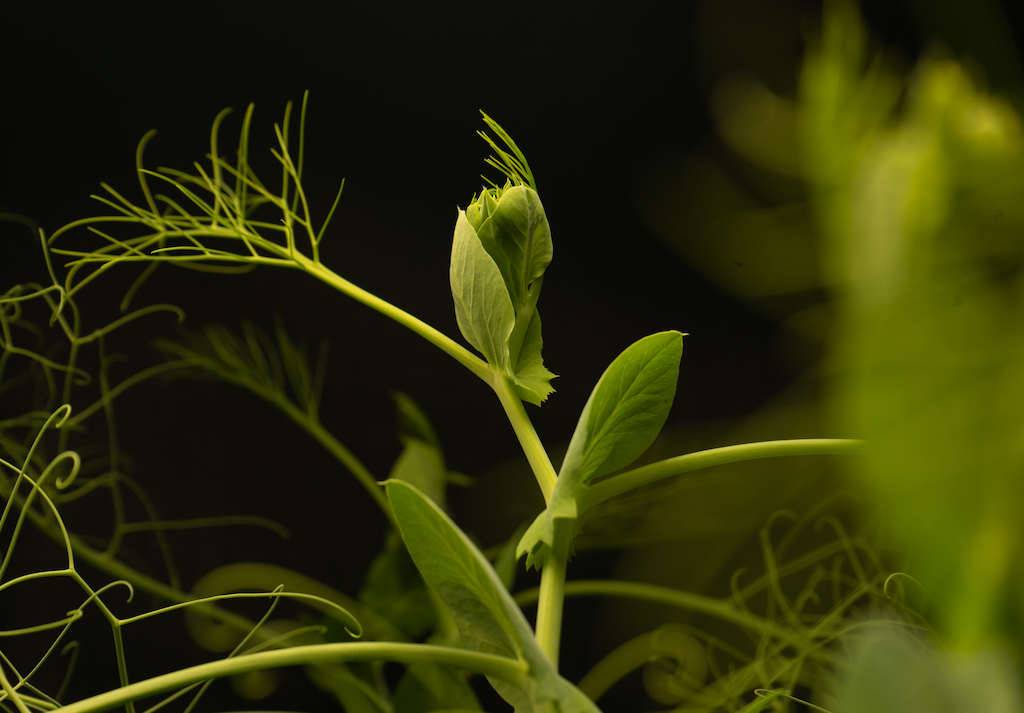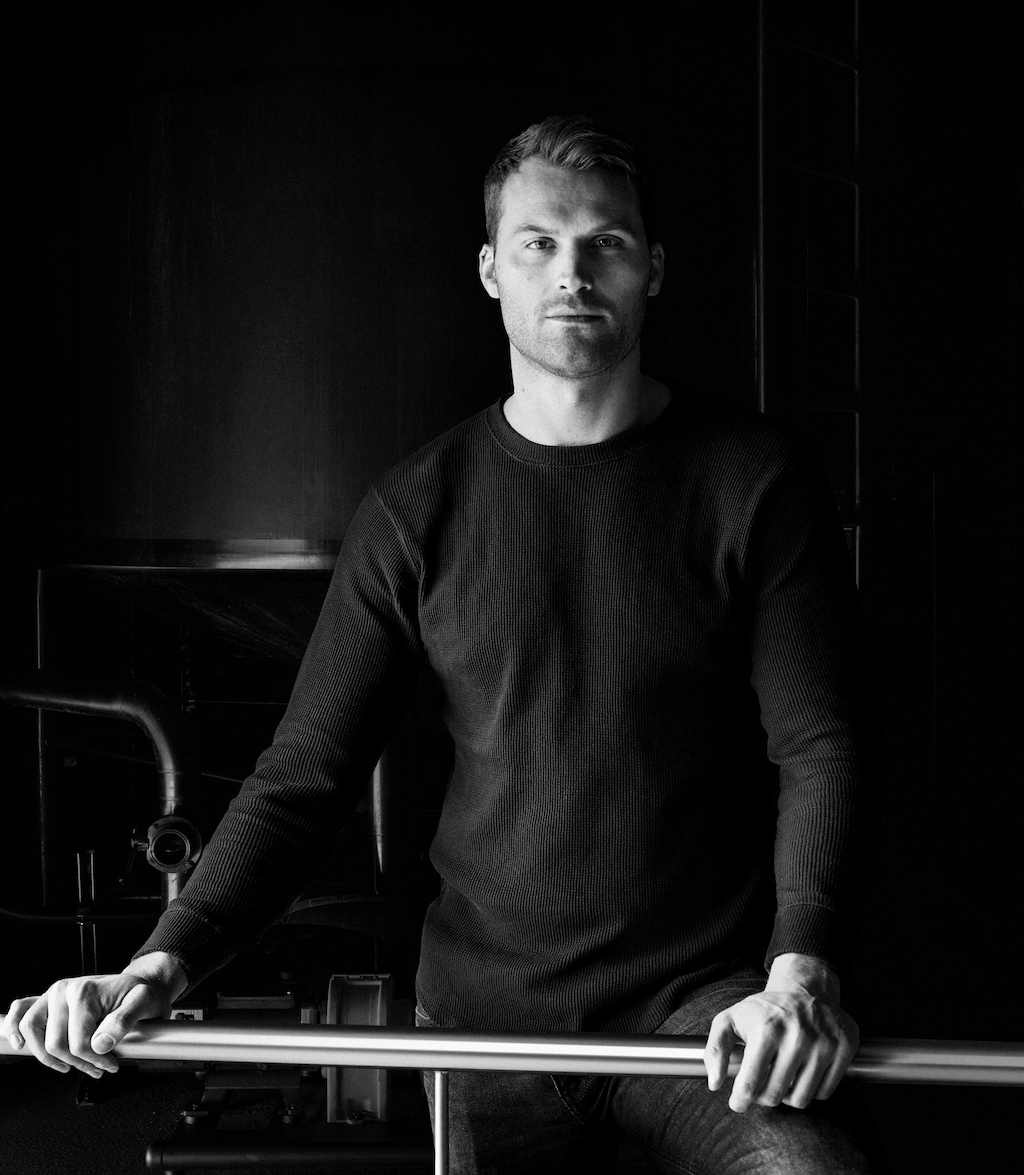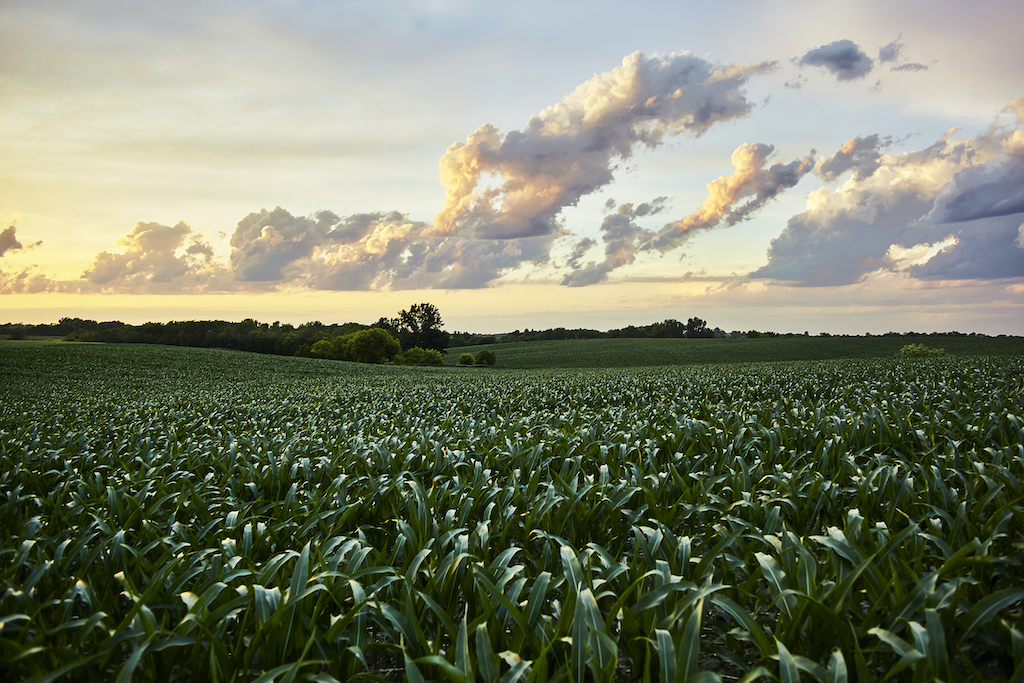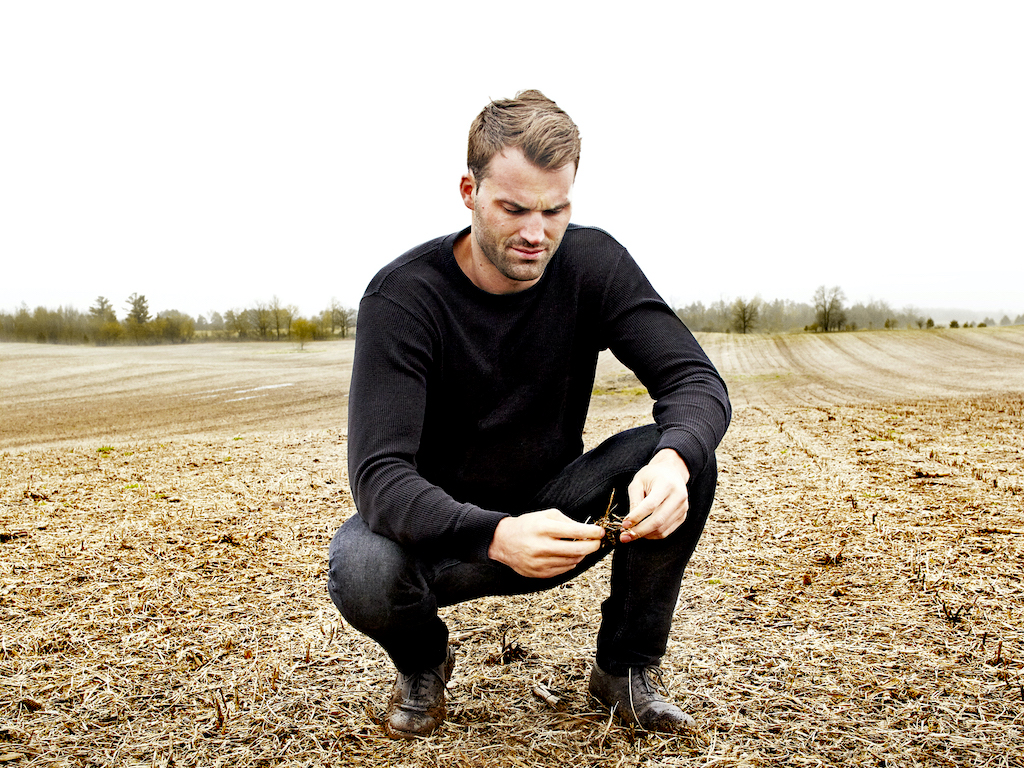Puris CEO Tyler Lorenzen On Protein, Biodiversity & Health: ‘Peas Are A Great Solution For Sustainability & Environmental Stewardship’
13 Mins Read
Based out of Minneapolis in the U.S. Midwest, Puris is the largest pea protein producer in North America, supplying famed plant-based burger maker Beyond Meat and backed by major food giants like Cargill. We recently had the chance to speak to Tyler Lorenzen, former NFL player and now the CEO of Puris Proteins, about the extraordinary rise of the plant-based industry, the journey of running the family-owned business, why he believes peas are fighting climate change and how the curious consumer will continue to drive better-for-you products on the market.
GQ: You’re a former NFL player and now the CEO of Puris. Tell us a bit about your career and how you moved into the plant-based food industry.
TL: My dad founded Puris back in 1985, so I grew up in the business. My dad was a plant breeder, and as a kid, all I heard from him was that someday people would begin caring about where their food came from, how it’s being made and that ultimately, they will get their protein from plants because it was a more efficient and sustainable model for the world. We have to make the seeds taste better and work better for the farmers to build this system. I spent my childhood with my sister, Nicole Atchison, who runs the company with me now, crossing soybeans and corn and different crops in Iowa with this intention of building a model where the seeds were built with purpose to feed people – to turn them into plant-based ingredients and have great-tasting food for people to eat that just happens to be made from plants.
When I went to play football, that was really what I fell in love with growing up, and was really determined to do that and had a nice run with the NFL. It wasn’t long for me and I came back and had some time off from the business, and I basically looked at some of the tailwinds of the industry and saw that we didn’t really have the growth trajectory we wanted. So I told him: let’s do this and go big. We ended up buying a protein facility in Turtle Lake, Wisconsin, and I got into the business and was heading that part of the company.
Fast forward ten years, we’re the largest pea protein manufacturer in North America. We’re building a second facility in Western Minnesota, which will be the largest production capacity in North America as more capacity comes online, and we are going to be the only dual manufacturer of pea protein in the region.
I’ve managed to take some of the lessons learned in sports and applied them to business, from how to create a great team and find different people that have certain strengths, to getting the whole team to play together and fight for something bigger for yourself. It’s been a lot of fun, super hard, but I’ve learned a lot and am incredibly grateful for the sacrifices my parents made when I was a kid, so we could have this opportunity to make an impact.
GQ: Why is North America so dominant when it comes to pea agriculture?
TL: I think North America is set up to grow crops, and the logistics of all of that is pretty great here, and of course the soil. I think there are other places around the world that are successful, but the lion’s share of peas is grown in North America, between the U.S. and Canada. There are other areas in Europe, China and India where peas are grown and it’s great for those areas, but when you look at the massive amount of production, definitely North America leads the way.
GQ: There is so much misunderstanding about mono-cropping, especially with regard to peas. Can you share more about this and why yellow peas are such a sustainable crop?
TL: Absolutely. Yellow peas give way more than they take. As a legume, they take nitrogen from the air and convert it through a symbiotic relationship with microbes in the soil and turn it into usable fertiliser for itself. They over produce it, so they also produce fertiliser for the next plant. Basically, they create soil health and biodiversity into the soil through crop rotation, where peas are grown in rotation with wheat, oats and hemp and so on, which require nitrogen.
Typically, peas grow further north and grow in the summertime. Back in 1999, my dad had a different idea and his concept was asking whether we could grow peas further south in the U.S. by adapting the seeds to work in a variety of different climate zones, soil conditions and weather patterns. If we could grow these peas at different times of the year, because they thrive in cooler weather and they don’t need the same amount of heat unit that most plants do, it would give farmers more biodiversity on a calendar basis. That way you get nitrogen fixation, soil health, and you would also get this crop diversity and additional revenue per acre for the land, especially for organic farmers.
We think about peas as a great solution for sustainability and overall environmental stewardship to really be the nurturers of the land.

GQ: So is that where you see the role of peas in the fight against the climate crisis and a shift towards more regenerative farming practices?
TL: Yes, so that’s the model my dad went on to build. Today, we have peas growing in six different climate zones all over the U.S., we have breeding locations in South Africa and India. We’re growing with hundreds of farmers, where not only are we growing peas on a single year rotation, but sometimes double crops – really growing peas akin to a cover crop that is harvested and monetised for the farm, which is really a new frame of reference. If you think about the total amount of acres that are growing, corn requires a pound of nitrogen per bushel yield, so corn yields about 175 bushels per acre. It’s a very high amount of nitrogen – it equals billions of pounds of nitrogen needed. But imagine if you could grow peas on all of those acres to make plant-based food – and you are helping to feed the world in a nutritious way while reducing the amount of synthetic nitrogen showing up in waterways across the U.S. due to farming high input crops. We think about peas as a great solution for sustainability and overall environmental stewardship to really be the nurturers of the land.
GQ: You’ve described Puris as a genetics company – why is this?
TL: We are a seed breeding company at heart. We use natural breeding methods to create better seeds for the environment, seeds for manufacturing plant-based foods, seeds that are bred for the purpose of human food, not for animals to eat them. There are certain things that may not be obvious, but when you think about specifically food humans eat, there are things we have to strive for – protein content, bland flavoured proteins, you want to be as bland as possible so they don’t create off-notes in products, functionality, emulsification. All of these unique attributes can be managed from a field and seed level. You can then also start thinking about the seed in terms of output of food, versus seeds only as a yield and food for an animal.
We use natural breeding methods to create better seeds for the environment, seeds for manufacturing plant-based foods, seeds that are bred for the purpose of human food, not for animals to eat them.
GQ: And does pea protein compare to other plant proteins such as soy, brown rice, hempseed, chia, pumpkin seed and so on?
TL: We’re certainly fans of the plant-based protein movement and celebrate them all. When you think about peas beyond the sustainability attributes that we spoke about, you can also start looking at the purpose of eating proteins. In the end, people are looking for amino acids. We all know essential amino acids must be consumed through food, and peas contain all essential amino acids. Some other proteins, like soy protein, do as well. But rice protein, for instance, is deficient in certain amino acids relative to pea protein.

What I love about pea protein is that it’s available to scale and has a strong amino acid profile and with the right processes and technology like Puris has, you can create great tasting and unique proteins that work well in applications. They can show up the way they need to, whether it’s to create structure in plant-based meat or to create other qualities in non-dairy cheese. Albeit similarly, soy has some advantages, but peas are naturally non-GMO, they are available, can be grown organically and there are no solvents used to make pea protein.
There’s a lot of good in all the plant proteins, so a combination of plant based proteins together in a diverse diet is probably the best way to go. But of course, I am certainly biased for pea protein because that’s what we do at Puris.
GQ: In a previous conversation, you mentioned that pea protein wasn’t taken seriously 20 years ago. Can you share more about the journey pea protein has been on?
TL: It’s really fascinating. Frankly, when I started in the industry in 2012, pea protein was available but wasn’t something that was well-known. It started gaining some traction for some of its attributes I had mentioned earlier, but when Puris was looking at peas, we thought there was a great opportunity to make the pea protein that existed on the marketplace taste much better. We were a new startup protein processor that has some killer technologies that we thought we could apply to our peas, and create some more value for farmers’ crops. We went after that.
From breakfast to dinner, every meal and occasion, people were looking for a plant-based solution for protein.
I can remember in my early days that some people would look at me funny when I mentioned pea protein. There’s this association, even today, with the green pea, but the peas actually come from yellow field peas that are certainly different looking than the peas you would eat out of a garden. We found early on when we built Puris that the success came from proving that our protein would work in applications that food eaters were looking for. We saw a big trend in lifestyle nutrition, where people were searching for plant-based protein and wanted it to taste great, mix well and be free from GMOs and allergens. We stood out there.
I think as we started seeing the growth of the industry, especially around food safety, plant protein kept rising to the top as an obvious solution. From breakfast to dinner, every meal and occasion, people were looking for a plant-based solution for protein, whether it’s yoghurt, or non-dairy milk, plant based burger, or something in between. Some of it is just curiosity or people striving for better health outcomes, but it’s also a bet on humanity that people are beginning to think about the future and how to build a more sustainable one for the planet. I’m really excited about that and I think pea protein can certainly help foster that.

It’s a bet on humanity that people are beginning to think about the future and how to build a more sustainable one for the planet.
GQ: Are you surprised at the huge spike in demand we’re seeing in plant-based protein? Do you think Beyond Meat, which you supply, played a role?
TL: Absolutely. I think Beyond Meat, especially with its IPO and the awareness it brought to mainstream consumers was great. Now there’s also companies like Oatly going public. It’s creating a buzz around their products, and the growth that it creates for their suppliers. What’s even more exciting to me is that there are now so many consumers and investors getting involved on a deeper level in terms of starting to understand and learn more about plant-based businesses and why they exist and why they matter.
In terms of whether I’m surprised, I would say that my family and our business, we were investing in this before all of the hype. We were building out plans to enable brands like Beyond Meat and others, to become wildly successful by providing the supply to scale. Where we’re at today, versus where this industry is going, we still have a lot of work to do. I’m surprised at the exact timing, but I thought it would be coming around eventually and that has always been our bet. We’re grateful that the social forces, the technology forces, economics and even politics are starting to enable this shift to happen at more rapid speed and that companies like Beyond Meat and Oatly are leading this charge to create the conversation. I’m pumped that this is happening.
GQ: Right now we’re seeing a lot more plant-based products focus on nutrition and health, and clean label marketing. Do you think this is going to be a major trend shaping the plant-based world? What other trends do you see gaining momentum?
TL: I think that the food industry in general assumes that consumers aren’t as smart as I believe they are. Once consumers have information, are aware, and become curious, it’s incredible the change that can be created from that. I think proof of this is in the clean label movement, where ingredient transparency, transparency about suppliers, where the product comes from, what it is and why it matters – I think it is consumer driven. It’s created a change in Consumer Packaged Goods (CPG), on how to market and find solutions and alternatives to artificial flavours and colours. It’s obvious compared to twenty years ago, when artificial high-intensity sweeteners were used, and those getting shifted out. It keeps happening, say with GMOs too. The curious consumer will drive better-for-you options and what’s exciting about that, as we talk about transparency, is the next evolution, which will be about not just what’s inside the food, but why and how it is being made. In the end, what are the outcomes in terms of environment and nutrition? As that type of data is becoming more democratised and easier to share to consumers – and brands are beginning to do this more – I believe that that the consumer will be even more powerful. People are going to choose between product A that is harmful for the environment and requires a large amount of greenhouse gases and product B that is more positive.
The curious consumer will drive better-for-you options.

GQ: I want to go back on some of the other non-food applications for peas, like pea starch being used in sustainable packaging. Could you talk a bit about this and what Puris is doing?
TL: While I can’t talk too much about specifics here, I think that in general, starches and fibres create a big part of our world, from the clothes that we wear to paper, gels and industrial applications. I didn’t realise this, but once you start peeling back the possibilities of pea starch, it really is endless.
From Puris’ perspective, we’re a food company first. We’re taking pea starch and creating a number of food applications. We’ve launched an organic gummy that contains no gelatin and no pectin. These are some of the basic concepts that with the right technology, the right ideation, you can create pretty awesome products that just happen to come along the journey of pea proteins. As you seeing more demand for protein, the corresponding products will create a more of a strategic market fit and I intend to enable a number of food companies to leverage the surge of fibres and different things to really create new foods. We launched a sweetener, for instance.
What’s cool is that we can create more use cases for peas, to create more soil health and impact more farmers and create better outcomes for everyone involved – and packaging comes into this. It’s part of the innovation of starches and carbohydrates in general, and peas will come into that.
We’re looking at this notion of protein independence, this idea where people can get all of their protein from plants.
GQ: What are some Key Performance Indicators (KPIs) you want to hit at Puris over the next 3-5 years?
TL: I’ve never had a journalist ask me this question, but investors do all the time! You know, we could talk about a whole bunch of things in terms of KPIs, but what we focus on here at Puris the most is feeding people first. We’re looking at this notion of protein independence, this idea where people can get all of their protein from plants. Our goal is to be able to create protein and independence for a large portion of the world. What we’re striving to do, by 2050, as the population grows to 10 billion people, is for peas to enable people to get their meals from plants. If we could, I think that is a pretty powerful place to head towards and we have milestones along the way. Every day we make a lot of protein that feeds people, and we want to continue to do that.
GQ: That’s a great way to wrap up with our final question, which we always ask – are you team rice or team noodles?
TL: I think I’m team noodles. Hopefully, a pea-based noodle would be perfect.
All images courtesy of Puris.




